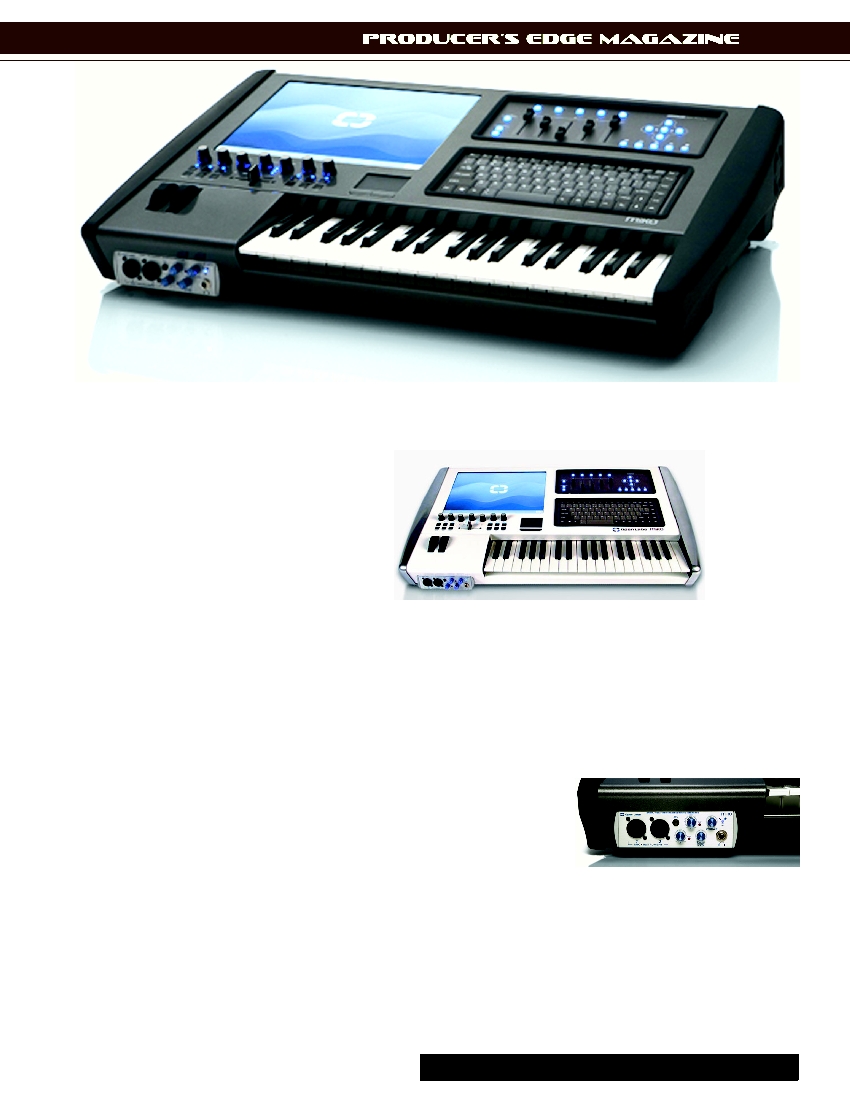39 Producer’s Edge Magazine Fall Winter
Words by Saga Legin
Total workstation solution
combining music and studio
technologies.
“I’ve made the new Timbaland
Special Edition MiKo with
Tim’s Touch. It’s got
everything I need in a
single box and when I use
it, we make masterpieces.”
- Timbaland
If I buy this will I sound like Timbaland?
Will this replace all my hardware
pieces? Should I buy this for my first
production system? Is this the best
bang for the buck when it comes to
workstations? Can I really have any
sound module I want in my miKo by
using its mimiK cloning software?
I
had a chance to test run the MiKo
Timbaland edition from Open
labs. The hype surrounding this
machine is enormous and kind of
pulled me in as well. After looking
at countless youtube footage and
reviews I had to get my hands on
this beast of a machine.
Open In the Lab
The Miko is no small piece of equipment. It is pretty heavy, about 30
pounds wider than it appears in pictures. The interface is Microsoft based with
the open labs logo as the desktop background. It comes loaded with sound
libraries from E-MU, Roland, Ensoniq, Moog and more. The host sequencers and
GUI include mFusion, mimiK, Karsyn, Wusikstation v3, Reaper, V4 sound library
and Cubase Le to name a few. Now keep in mind, you can install any windows
compatible software onto the machine like a standard PC. It also uses a Presonus
mic pre and has 4 inputs and 6 outputs.
Meeting the MiKo
After setting up the MiKo I immediately went into a program that comes
native with the unit (except the se model). The program that I couldn’t wait to use
was Mimik. It allows you to clone any of your existing keyboards, and/or sound
modules onto the MiKo’s hard drive. Mimik is supposed to be very intuitive and
give you the capability to copy all the attributes of the sound your cloning (velocity,
note range, decay, etc). I thought wow, this is a program sent from the gods. I
can not only use the massive library of sounds this thing comes with, but also my
keyboards and modules with it as well. I own a Korg OASYS, n364, mo phatt,
Roland XV5080, and a Motif rack. So I dived right in and began the process of
cloning my machines. To my dismay, the cloning process, for one sound in a bank,
Open Labs MiKo Timbaland Edition

